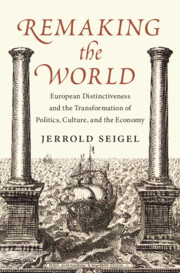 Remaking the World
Remaking the World from Part I - Liberty and Liberties
Published online by Cambridge University Press: 29 November 2024
By the end of the eighteenth century the plural language of liberty was under widespread attack, denounced by radicals as a denial of innate human rights and a tool of monarchical despotism. This evolution was partly powered by the consolidation of nation-states that picked up speed in the sixteenth century, but this centralization was long incomplete. In this situation the terms “liberties” and “privileges” were almost universally regarded as equivalents, even by so radical a movement as the English Levellers of the seventeenth century. The dissolution of this equivalence took place in France, first as the monarchy’s political and fiscal shenanigans sapped people’s faith in the system, and then as the Revolution mounted a full-scale attack on privilege as a source of inequality and despotism. Supporters of the Revolution followed its lead, but the old language still played a role in Britain and Germany, a reminder that the old language, even with its equivalence of liberties and privileges, long persisted in fostering self-government and resisting oppression.
To save this book to your Kindle, first ensure [email protected] is added to your Approved Personal Document E-mail List under your Personal Document Settings on the Manage Your Content and Devices page of your Amazon account. Then enter the ‘name’ part of your Kindle email address below. Find out more about saving to your Kindle.
Note you can select to save to either the @free.kindle.com or @kindle.com variations. ‘@free.kindle.com’ emails are free but can only be saved to your device when it is connected to wi-fi. ‘@kindle.com’ emails can be delivered even when you are not connected to wi-fi, but note that service fees apply.
Find out more about the Kindle Personal Document Service.
To save content items to your account, please confirm that you agree to abide by our usage policies. If this is the first time you use this feature, you will be asked to authorise Cambridge Core to connect with your account. Find out more about saving content to Dropbox.
To save content items to your account, please confirm that you agree to abide by our usage policies. If this is the first time you use this feature, you will be asked to authorise Cambridge Core to connect with your account. Find out more about saving content to Google Drive.